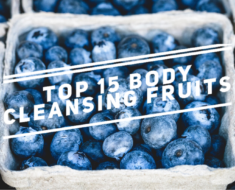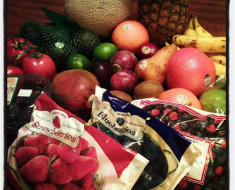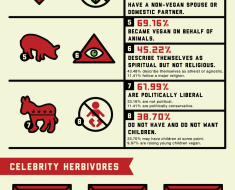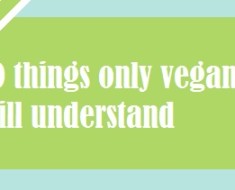
Your guide to Vegan Leather
It’s clear that environmental complications will consume our planet soon if we don’t act on it. Part of what’s driving our one Earth to its limits include excessive meat consumption and mass killings of pigs, cows, and chickens. Have you ever thought about the countless animals killed for our leather jackets? Maybe you’ve mused about possible alternatives, about ways people could dress in style without killing the poor animals. Well, fear no more, for vegan leather has come to the rescue.
What is Vegan leather made out of?
Vegan leather is a cruelty-free alternative to leather, made of man-made chemical formulas. If you’re using vegan leather, you’re killing two birds with one stone by saving animals and fashion at the same time! This type of fabric has been around for a couple of decades now, but demand for it has recently increased as it’s become the new trend. More and more people are showing interest in becoming vegan, and it’s no longer the arcane concept that it was perceived as a couple of decades ago. As a result, animal-friendly leather is on the rise.
Most types of vegan leather that you can sometimes find in local shops or online are made of PU (Polyurethane) or PVC (Polyvinyl Chloride). PVC was used more often in the past, but ever since environmental concerns around the material have increased, PU is becoming the preferred compound for making vegan faux leather, though it is still far from environmentally friendly. Both of these materials rely on fossil fuels and are a very slight improvement from “normal” leather.
Is Vegan leather good for the environment?
Unfortunately, vegan leather usually doesn’t last as long as animal-based leather. Furthermore, it isn’t able to biodegrade, leaving microplastics behind. Vegan leather isn’t more ecologically safe than animal leather, and the one benefit that it holds is that no animals were harmed in the manufacturing process.
In some ways, buying a cheap thrifted leather jacket from your nearest salvation army store may be better for the environment than purchasing a pricey vegan leather jacket online. This is especially so since vegan leather is much thinner than genuine leather and might last less – the environmental consequences would be greater if you bought three thin faux leather jackets, lasting one year each, to replace one durable leather jacket which would normally last three years.
How is the quality?
What’s more, towards the end of their usable life, the faux leathers are reported to flake away and have an unattractive appearance. This is another pitfall that vegan leather has, as animal leather wears away in an aesthetically pleasing way and becomes more pliable and soft instead.
Don’t give up on vegan leather just yet, though. As people become more aware of the implications involved with PU or PVC-based leather jackets, companies have since been researching better ways to create vegan leather. Some of these innovative methods include utilising plant materials or waste.
Example of Vegan leather:
An example of environmentally safe vegan leather includes a material called “Pinatex”. It’s made from something that you’d least expect – pineapple leaves, of all things. How? Firstly, the cellulose fibre from pineapple leaves is extracted, then it is mixed with petroleum-based resin to create a pliable, leather-like substance. This invention is great because it utilises pineapple leaves, which are usually dumped in landfills or cast away to rot. It requires no additional chemicals, and what’s more – the leftover residue can be utilised as fertiliser! The one downside about Pinatex is that the coating on the leather isn’t biodegradable, the one downside for a seemingly perfect material.
Another benefit of the “Pinatex” type leather is that it doesn’t smell like other man-made leather. Usually, faux leather made of PVC or PU is said to have a “fishy” smell, which can be very, very hard to get rid of it without damaging the material. For fabrics made of PVC, a type of toxic gas can exude from the material. The effects of this gas on the human body has not yet been tested, so it would be best to steer clear of PVC vegan leather.
Seacell
One other example of environmentally safe vegan leather is SeaCell. True to its name, the leather is sourced from the sea, using yet another unexpected element – kelp seaweed, the stuff that sea turtles eat. To make SeaCell, dried seaweed is mixed with cellulose (Tencel and algae fibres) to produce a pliable, leather-like fabric.
SeaCell is manufactured from tree and seaweed extracts, by using methods that are sustainable. Whilst harvesting the seaweed for use in the fabric, care is taken not to harm the seaweed and only the regenerative (replaceable) part of the seaweed is collected for use.
SeaCell is suitable for a range of activities as it is breathable and light, including but not limited to swimming wear, backpack material, fashion clothing such as a cashmere cardigan and many more. Unlike PVC leather, it doesn’t irritate the skin. In fact, it calms the skin, and it has the potential to cure skin diseases. It’s also very soft.
One controversy that made the quality of SeaCell fabrics questionable was the Lululemon Athletica’s line of apparel. “Lab tests by the New York Times on a sample showed that seaweed minerals were barely traceable in their product, and it wasn’t any different from plain cotton T-shirts.” (Ross, 2017) Despite this, some customers still claim that the overall feel of the material is greatly different from normal cotton T-shirts.
The future:
As of the time of writing (2020) “vegan leather” isn’t yet a widely recognised term, but its reach is still growing. Veganism is on the rise, due to concerns with our planet and moral points of view, and as veganism grows the market for vegan leather is also expanding.
Because of this, research is being conducted on possible alternatives to man-made materials and who knows – they might be released to the public soon. A cheap, high-quality material for clothes such as a turtleneck sweater will hopefully be created in the near future due to advances in technology. Until then, the best we can do is to recycle our old clothes, donate and shop from thrift stores, and reduce our carbon footprint.






